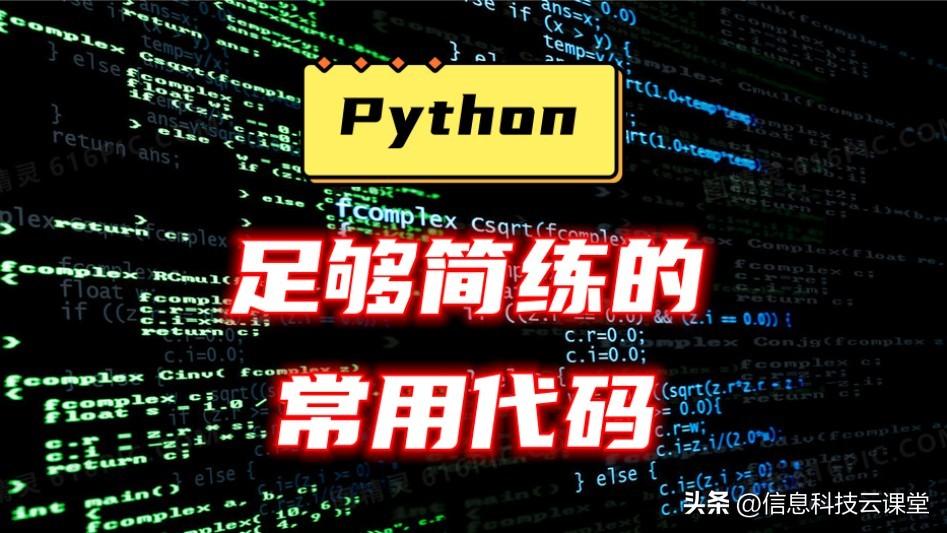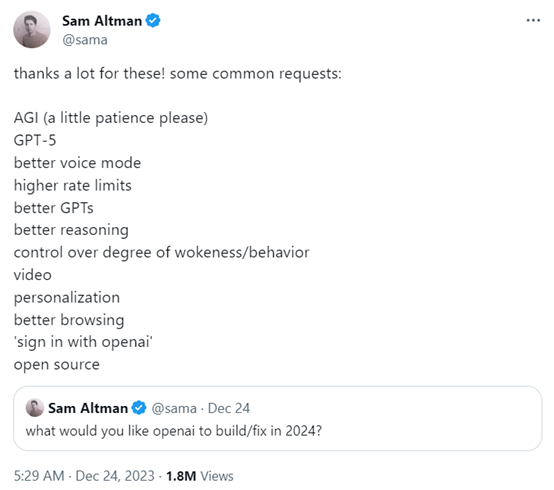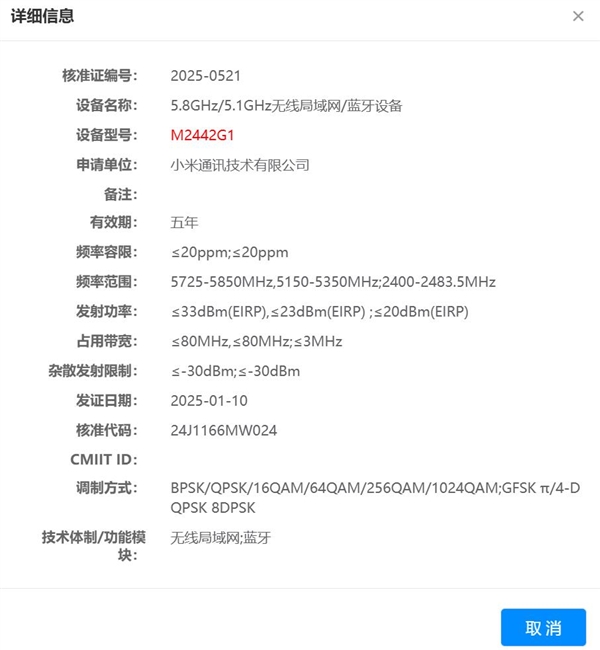你必须知道的常用的足够简练的 11 个 Python代码

许多程序员喜欢Python,因为它的语法简单简洁。下面提供的这些 Python 代码足够简练,可用于解决常见问题。

dict1 = {'A':33, 'B':43, 'C':88, 'D':56}
# 提取字典中值大于50的键值对
dict2 = { key:value for key, value in dict1.items() if value > 50 }
print(dict2)
set1 = {'A','C'}
# 提取字典中键包含在集合中的键值对
dict3 = { key:value for key,value in dict1.items() if key in set1 }
print(dict3)
「输出:」
{'C': 88, 'D': 56} {'A': 33, 'C': 88}
可以使用 str.replace() 方法搜索和替换字符串中的文本。
str1 = "http://www.zbxx.net"
str1 = str1.replace("http", "https")
print(str1)
「输出:」
https://www.zbxx.net
对于更复杂的搜索替换,可以使用 re 模块。Python 中的正则表达式可以使复杂的任务变得更加容易。
可以使用列表推导式根据特定条件过滤列表中的元素。
list1 = [12, 56, 34, 76, 79]
# 提取列表中大于50的元素
list2 = [i for i in list1 if i>50]
print(list2)
「输出:」
[56, 76, 79]
可以使用 ljust()、rjust() 和 center() 方法对齐字符串。 可以实现左对齐、右对齐及使字符串在给定宽度的范围居中对齐。
str1 = "Python"
print(str1.ljust(10))
print(str1.center(10))
print(str1.rjust(10))
「输出:」
Python
Python
Python
还可以使用字符填充。
str1 = "Python"
print(str1.ljust(10, '#'))
print(str1.center(10, '#'))
print(str1.rjust(10, '#'))
「输出:」
Python####
##Python##
####Python
可以使用赋值运算符将任何序列拆解到变量中,只要变量的数量和序列的元素数量相互匹配。
tup1 = (1, 2, 3)
a, b, c = tup1
print(a,b,c)
「输出:」
1 2 3
自定义函数中,需要使用 “*” 来接受任意数量的参数。
def mysum(value1,*value):
s=value1 sum(value)
print(s)
mysum(10, 10)
mysum(10, 10, 10)
「输出:」
20 30
可以使用 reversed() 函数、range() 函数和切片技术以相反的顺序迭代序列。
list1 = [1, 2, 3, 4, 5, 6]
for i in reversed(list1):
print(i,end='')list1 = [1, 2, 3, 4, 5, 6]
for i in range(len(list1) -1, -1, -1):
print(list1[i],end='')list1 = [1, 2, 3, 4, 5, 6]
for i in list1[::-1]:
print(i,end='')
「输出:」
654321
如果只想在文件不存在时才写入该文件,则需要在 x 模式(独占创建模式)下打开该文件。
with open('abc.txt', 'x') as f:
f.write('Python')
如果文件已经存在,则此代码将导致 Python 出错:FileExistsError。
❝
文章创作不易,如果您喜欢这篇文章,请关注、点赞并分享给朋友。如有意见和建议,请在评论中反馈!
❞
短剧吃肉、网文喝汤,Reelshort带Kiss闯进非游收入30强
昨日data.ai公布2023年8月中国非游戏应用出海收入30强,一款名为Kiss的网文App表现抢眼,排名上升29位来到榜单第20名,成为本期上榜产品中排名上升最快的App。除了快速增长的收入,更让我感兴趣的是,Kiss与近日炙手可热的短剧出海AppReelshort均来自中文在线海外公司CrazyMapleStudio。Kiss位列8月中国非游戏应用站长网2023-09-14 21:35:280001GPT-5、开源、更强的ChatGPT!OpenAI公布2024年计划
年终岁尾,正值圣诞节热闹气氛的OpenAI写下了2024年的发展清单。OpenAI联合创始人兼首席执行官SamAltman在社交平台公布,AGI(稍晚一些)、GPT-5、更好的语音模型、更高的费率限制;更好的GPTs;更好的推理能力;对唤醒/行为程度的控制;视频模型;个性化;更好的浏览;开源,将是OpenAI在2024年要实现的目标。站长网2023-12-25 17:32:2000002023 年「人工智能工作」的谷歌搜索量是「加密货币工作」的 4 倍
根据加密货币数据聚合平台CoinGecko的最新分析,人工智能(AI)在求职者争夺战中成为明显的赢家。从2020年到2022年,「AI工作」和「加密货币工作」的搜索量保持相对接近,大部分时间AI占据优势,但在比特币于2021年11月达到创纪录的高点69,000美元后,加密货币搜索超过AI,领先一步。站长网2023-07-06 18:22:270001谷歌宣布清理搜索结果中的AI生成垃圾
划重点📌:1.谷歌宣布对AI生成的内容进行清理,以减弱那些“感觉是为搜索引擎而非人们创建”的网站的影响。2.谷歌表示这一变化涉及其核心排名系统的算法改进,主要针对自动化内容,包括由生成式AI创建的内容。3.谷歌预计这一变化将减少搜索结果中40%的低质量和缺乏原创价值的内容。站长网2024-03-06 14:20:420000













